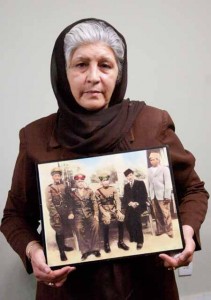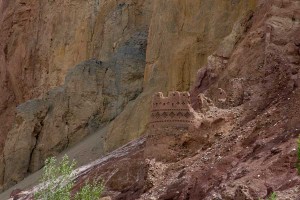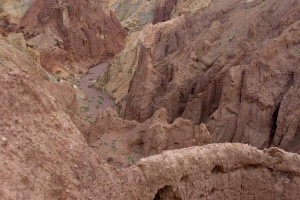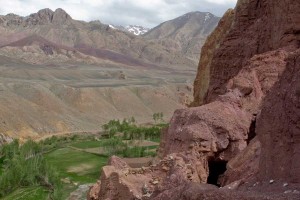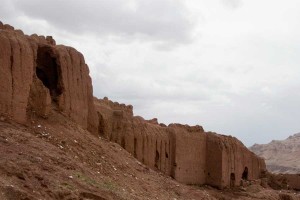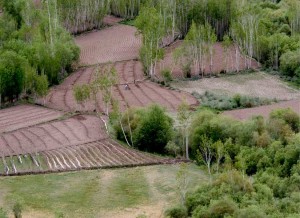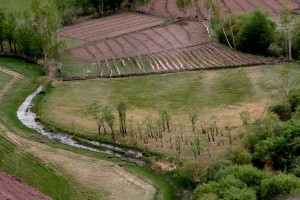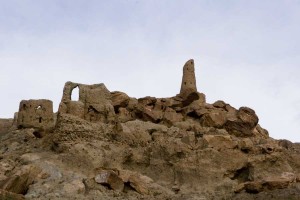Suraia Perlika
March 3rd, 2011
You will be able to read about the further exploits of Tajwar in my book which is scheduled to be out in January of 2012. Her life story is the story of the “freedom fighters” as she called them.
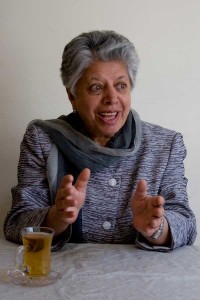
I’m now working on Suraia Perlika’s life story which tells of another woman also working for women’s rights and education, but from the Comunist side. She was one of the founders of the Democratic Women’s Organization which was supported by the Communists and also used as propaganda by them to show how much they’ve improved the lives of Afghan women. Ultimately, they imprisoned Suraia and put her on the “death list” but at the last minute she was pardoned by a rival Communist faction who had just come to power. She revived the Democratic Women’s Organiation as the Afghan Womens’ Union and gave herself the made-up name, Suraia Perlika.
Posted in Afghan Women's Project, AWP 2010, education, Other, Peggy Kelsey, political, Suraia Perlika, women | Comments Off on Suraia Perlika
Tajwar Kakar Part 4, Actions Taken
February 18th, 2011
Women did not sit passively by as their men were fighting the Soviets. Tajwar was a leader, but she couldn’t have done much without the support of other women working with her. When Tajwar first told me her story, I could imagine her life up on the big screen, an audacious adventure story and action movie. When I shared my vision with her, she laughed and said that she was only one of many, some more intrepid than she was. She told me that she was writing a book on heroic women from around the country and their daring escapades while fighting the Soviets. I can’t wait to see that book!
And there were others… just the other day I ran across a short article about Hajiyani Abeda, a woman who in her heyday commanded 200 male fighters and another article from 2006 about Bibi Ayisha Kaftar aka “The Pigeon” who “fought off the Russians, the Taliban and local rivals.”
Back to Tajwar and her account of several of her actions.
Peggy: After I returned from Afghanistan I heard a story about a foreigner who had been sitting on her balcony one evening around dusk when she heard a rumbling sound in the distance. Thinking that it was more Soviet tanks coming to her part of the city, she looked around below to see if she could see anyone on the streets but they were empty except for occasional Soviet patrols. As the sound grew closer, she realized that it wasn’t the rumbling of tanks, but the chanting of “Alahu Akhbar”, growing stronger and closer until the chorus surrounded her. She looked down into the neighboring courtyard and saw the family members shouting their defiance from the safety of their compounds.
Tajwar: Afghan women were the first to demonstrate after the Russians came. Allahu Akbar was the first one we did. One day the Russians killed a lot of soldiers so that night a lot of people came to our home to write a night letter. There was a lot of snow that night and I walked the streets at midnight giving the message that we were to say Allahu Akhbar the following evening . When we started, you would have thought that all the world is saying Allahu Akbar. The walls shook and it made the Russians afraid. We said it all night. I was with my brother. One lady we know put boiling water on our heads.
Another day I wrote a letter and again took it door to door. It said: “If you hate Russia, don’t go to work, don’t go shopping.” For 3 days all the shops were closed. We did it just to find out how much support we had. For me it was very dangerous. All the communists know me and know my story. They follow me everywhere.
Peggy: Imagine the effect: 18 year old Soviet youth, ethnic Russians as well as others from throughout the Soviet empire, many never having left their small-town homelands, all indoctrinated against religion, having been drafted and shipped off to Afghanistan, which was to them, the ends of the earth. Accounts I’ve read say that “Already in 1983 word had gotten around (among the Soviet recruits) that Afghanistan was a hellhole”.* So, imagine these fellows patrolling the streets when first quietly in the distance when gradually from all around them wells up a defiant “Alahu Akhbar” that goes on for the entire night. They can’t get away from it, they can’t see who is doing it, but they can hear hundreds, maybe thousands of voices rising up against them, while being impotent to do anything about it.
Tajwar: We decided to disrupt the celebrations of the first anniversary of the Communist regime in April of 1979. Teachers would be forced to bring their children to watch the parade. We gave the kids some balloons and toy explosives. When the parade started, the kids began popping the balloons and setting off the firecrackers. Women in the crowd started shouting “The Mujahadin are coming!” and the Communists in the parade ran for cover. The rest of the ceremony was canceled.
Another activity we planned was to disrupt the May Day Parade. I talked with certain students at the school and told them to collect wasps in tiny boxes. On May Day, the Russians had a big parade with tanks and then rows and rows of soldiers marching with their rifles. A big crowd gathered to watch them. At a certain point, our supporters in the back of the crowd begin pushing everyone toward the parade. When they got close enough, at another signal, the kids started going crazy and they ran in and among the soldiers, stooping low while they opened their boxes. You should have seen it! The wasps flew up the soldiers’ pant legs and into their shirts. Soldiers dropped their banners and rifles as they began swatting at the wasps. The whole parade was disrupted and then disbanded. We collected 25 rifles and small arms that day and we showed the Russians our power. These were the kinds of things we did.
*Klaits and Klaits, Love and War in Afghanistan, p 151.
Posted in Other | Comments Off on Tajwar Kakar Part 4, Actions Taken
Tajwar Kakar, Part 3, Freedom Fighting and Escape
February 4th, 2011
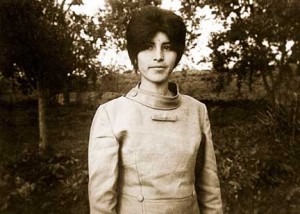 The Communists suspected that I was working against them so they got my family to watch me. They followed me when I left my house, especially my husband’s other wife. Her two sons worked for KGB. She was an uneducated woman but for 24 hours she watched me from her house. Whenever I would leave, they reported that, for example, I was wearing a gray skirt and blue scarf. They described me like that every time.
The Communists suspected that I was working against them so they got my family to watch me. They followed me when I left my house, especially my husband’s other wife. Her two sons worked for KGB. She was an uneducated woman but for 24 hours she watched me from her house. Whenever I would leave, they reported that, for example, I was wearing a gray skirt and blue scarf. They described me like that every time.
But to do my work, I needed to go to my friends’ villages to talk with the people. Thousands of freedom fighters came to visit me. For example, a popular commander came to visit me from Herat and another all the way from Mazar Sharif. I didn’t have a car and everyone was watching for me. So, I would leave home wearing a burka. Then I went to a freedom fighter friend’s house and changed into peasant clothes and my burka. All of the roads had checkpoints, but I went by donkey and they ignored me.
But one year, I was 7 months pregnant and I couldn’t go by donkey anymore and sometimes the Russians attacked the villages and I couldn’t run anymore in my condition, so I stopped going to the villages. Instead I just waited for my child and I worked at home. When I was nearly due, they wouldn’t let me go to the doctor to check myself and after 10 months were finished, I couldn’t deliver the child. Finally, I was home alone when I birthed my baby.
When my baby, my seventh, was born, the Communists made a plan to arrest me again and give electric shocks to my baby to get me to talk. This baby is now in Australia at the university studying journalism. A week after the birth I got a report that they would arrest us. So, at midnight that very night, my husband, my six other children and I walked over the mountains to Kabul. Sometimes we took the roads in areas that were empty of Russian soldiers and rode a bus or car. When we came to the areas where they had checkpoints, we walked in the mountains. It took us a week. (It’s a 12 hour drive when the roads are good.)
I remember in that year that they killed a lot of people, raped a lot of women and killed a lot of children. At one point, we got on a bus that was full of escaping women. When we arrived in Taloqan, a man came and told the driver to hide everything. I was sitting behind the driver and heard everything. He said that the Russians had blocked the road and they were looking for one woman. I understood that they were looking for me.
I told the driver to please wait. There were a lot of women and children in the bus without their men, so I told my husband to go bring them water. The bus driver was irritated and asked, “Why are you changing my schedule?” I asked him to please stay for 30 minutes while they bring water. When we finally left, another bus had taken our turn in the convoy. They shot that bus with a rocket and all the people in it died. In the line of 70 cars, just our bus remained unharmed and also three people from another bus. It was amazing because when I left, I only took my Holy Koran. I didn’t take my gold, I didn’t take anything. I just took my Holy Koran. When they tried to shoot our bus, they couldn’t shoot. One Hindu lady whose family was in the other bus came covered in blood and I took her inside ours. When she saw the Koran, she said that they can’t shoot this bus because I opened the Koran for our Allah to save us.
Only our bus arrived in Kabul safely. Some friends there explained that they had put my picture everywhere and a price on my head. One warned us that my life was in danger so we decided to evacuate to Pakistan. After 7 days some men came from Gazni to guide us. We bought some wedding party dresses from the bazaar and sent my brother to buy the bus tickets. He told everyone we were going to a wedding party in Kandahar but we got off the bus early and made our way to Gazni. When the way was safe, we continued to Pakistan. This was 1984.
Posted in Other | Comments Off on Tajwar Kakar, Part 3, Freedom Fighting and Escape
Tajwar Kakar part 2 Life under the Communists
January 21st, 2011
 My mother engaged me when I was 12, I was married at 14 and had my first child at 15. My husband was Uzbek (which means that he spoke Uzbek as a first language and he had many customs I wasn’t used to. I was his second wife. He was a very powerful man and was always having guests over. So, every other night I had to prepare large dinners for them as well as keep up with my school work (I was in 8th grade when I married) and take care of my children. I never had any help, I did all the work myself.
My mother engaged me when I was 12, I was married at 14 and had my first child at 15. My husband was Uzbek (which means that he spoke Uzbek as a first language and he had many customs I wasn’t used to. I was his second wife. He was a very powerful man and was always having guests over. So, every other night I had to prepare large dinners for them as well as keep up with my school work (I was in 8th grade when I married) and take care of my children. I never had any help, I did all the work myself.
Before the government changed, I had a normal life, a happy life. I finished my schooling and taught for 5 years in Kunduz high school. And after that I became headmaster. But when the government changed. and the king’s cousin, Daoud came into power the Communists began trying to register people. All of my husband’s family became members of the communist party. They especially wanted me to join because my father had been so powerful and so popular, But I rejected it. And so, I was the first woman who got fired from her job. For 3 months I stayed home but eventually they assigned me to another school and watched me very closely so that I couldn‘t contact my friends.
After a year, they sent me to Kabul and every subsequent year they sent me to a different school and gave me different subjects to teach. Every week they came into my classroom and pushed me to join the Communist party. They promised to give me a good position. They offered to send me to Russia or Poland to get my Master’s degree, but I refused it all, knowing that I would be forced to become Communist. They send me from school to school so I wouldn’t have a chance to make friends. But that was a good chance for me. I found a lot of my friends and my teachers and old students. During these 4 years they were arresting people twice a month . They arrested me in 1980. At that time, my oldest child was 14 and my youngest was 5.
In early 1980, whenever the Communists saw any young men they conscripted them and sent them to war. At one point they had arrested 150 men and asked each of them who was working for the freedom fighter women and they gave my name. Three people were witnesses saying that I was the head of women freedom fighters in Kabul. At first they put me in a KBG jail to do an “inquiry”. There I was tortured with electic shock. A lot of people died there. After a month they put me in another jail for a year. The whole time I refused to give any names or information and after a year I was released.
When they let me go, they made me sign a letter saying that if they find that I have any connection with freedom fighters, they will kill me. I signed that paper. When I got out they sent me back to Kunduz and I found that they had punished my children in a different way by telling them bad things about me. At the same time, the Afghan Communists were attacking villages, people’s houses, raping their women and killing their husbands and their children. So I became the freedom fighter leader in that city.
So, they sent me back to Kunduz and I found that they had punished my children in a different way by telling them bad things about me. At the same time, the Afghan Communists were attacking villages, people’s houses, raping their women and killing their husbands and their children. So I became the freedom fighter leader in that city.
Posted in Afghan Women's Project, Other, Peggy Kelsey, Tajwar Kakar, women | Comments Off on Tajwar Kakar part 2 Life under the Communists
Tajwar Kakar Part 1, Birth Story plus 2011 Update
January 9th, 2011
I’ll begin 2011 with the amazing birth story of Tajwar Kakar, a woman I met on my trip in 2003 and again this past spring. I’d love to see her life portrayed on the big screen.
Tajwar Part 1 Birth Story
In 1948, Tajwar’s soon-to-be father was commissioner of the border between the Soviet Union and Afghanistan. The Russians* had gotten control of the Amu Darya River, also known as the Oxus, which runs along the northern side of Afghanistan, and were trying to make the border on the Afghan side of the river. “My father didn’t let them,” Tajwar told me. Six times before, Afghans had tried to negotiate a mid-river border, but had failed. “My father was brought from his post in Farah Province to meet with King Zahir Shah and head up the delegation. Before he left, my grandmother told him that my mother was pregnant. He told my mother that it doesn’t matter whether this child is a girl or a boy, but ‘if I get the river from Russia then it will be a lucky child for me. If I lose this river and Russia makes the border inside Afghanistan, this will be an unlucky child and I never want to see its face.'”
“So every time my grandmother prayed she would say ‘Allah, please help that man. This is an innocent child. When he says he will do this he will because he‘s a very strong Pashtun.’ My grandmother prayed every day that my father would get the river back. On the same day I was born he won back the river.”
“When he got the river he called to his people and told them to bring my child to the border. My grandmother said that I was too young but some people came and made a basket from branches and some very nice cloth. I was put inside and they took off for the border. More than 5000 people followed. When I arrived, my father put me in the boat and we went out into the river where he gave me the name Tajwar which means crown.”
“When he got back to Kabul, my father warned the king about Russia’s intention to invade Afghanistan and of his cousin, Daoud’s intention to help bring it about. Mr. Kakar was ignored, but his sympathies became known within the palace.”
“We moved to Kunduz when I was nine. Two years later, my father was poisoned by Daoud’s people because he was a powerful man and he didn’t support the Russians.”
*Tajwar always referred to the Soviets as Russians, but there were many Soviet troops from Kazakhstan as well as the other satellite states in addition to the Russians.
UPDATE
It’s been months since I’ve updated my blog. But with a new year comes a new determination to be more present in this space. 2010 brought my second Afghan Women’s Project trip to Afghanistan and its subsequent six months of interview transcription and image processing. Finally, my new presentation, Afghanistan 2010, a View from the Ground was crafted and debuted.
2011 will be the year of writing my book on the subject as well as giving presentations throughout the country. In addition to commentary on issues, I will be posting here in this blog elements from the book plus reviews of books pertaining to Afghanistan that I’ve read. And I resolve to post more regularly.
Posted in Afghan Women's Project, AWP 2010, education, Other, Peggy Kelsey, Tajwar Kakar, Uncategorized, women | Comments Off on Tajwar Kakar Part 1, Birth Story plus 2011 Update
November 7th, 2010
It’s been a long time since I last posted. I’ve been very busy, focused on preparing the photo exhibit which will accompany my presentation, Afghanistan, 2010, a View From the Ground here in Austin on Nov. 19th at Ventana Del Soul in Austin. (78741)
Now I’m to the point of proofing the images and working on the word panels containing each woman’s bio and an excerpt from her interview that will accompany each of 25 portraits. This stage of the process has been gratifying and revelatory as I get a chance to step back from the mass of images and words and look deeply into individual eyes and take in their messages.
For example, I see the strength and determination in Habbiba‘s face while I read about the death threats she received during her time living in a Pakistani refugee camp. She and her sisters had started an informal school for bored young kids who were acting out but elders in the camp threatened to kill her if they didn‘t stop. She also started a small business in the camp, bringing in items from the bazaar in Peshawar to sell, which earned enough money to enable her and her family to move out.
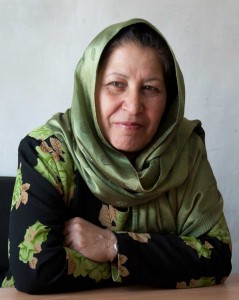
And there is the forthright look and single purpose of Rohina, who at 11 years old, is solely focused on her dreams of becoming a doctor and leading her family out of its hand-to-mouth poverty.
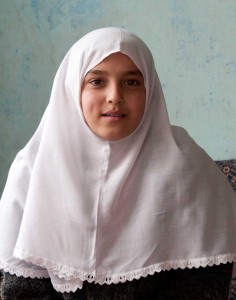
And Sakina, an 80 year old “internally displaced person”, (IDP) who returned to Kabul from a refugee camp in Pakistan. Her family couldn’t afford a house, so she now lives in an informal camp inside the city. I marvel at the determination in her face and the sparkle in her eyes.
In spite of her lifelong poverty and struggles with living in uncomfortable conditions and severe winter cold at her advanced age, she is still an active member of her family and complains that people don’t want to hire her to clean their houses because they think she’s too old.
To book the exhibit and/or presentation(s), email me at peggy@kelseys.net
Posted in Afghan Women's Project, AWP 2010, psychological health, refugees, women | Comments Off on
Depression
August 22nd, 2010
Posted in AWP 2010, Other, psychological health, Uncategorized, women | 2 Comments »
Commentary on the Aisha NY Times Article
August 8th, 2010
Often glossed over in the story of Aisha, the beautiful 18-year-old woman who was disfigured as retribution for running away from her inhuman marriage, was that although it was a Taliban commander who ordered her horrific punishment, it was her husband (also a Taliban commander) who held her down.
This sort of human rights abuse has been going on since pre-history in the form of “blood debt”, a sacrificial attempt at holding the fabric of society together. To redress an offense, the family of the perpetrator gives a child in marriage to the wronged family. In Aisha’s case, she was married off to atone for her uncle having killed of one of her husband’s relatives. These unfortunate women are generally treated as slaves and subject to all kinds of abuse from their husbands, mothers-in-law and other family members.
The perpetrators of this crime against human rights were Taliban, but it didn’t happen because they were Taliban. As with honor killings, the custom of murdering women for destroying the perceived honor of their family, whether proven or only suspected, the blood debt is a means of restoring honor to the family and stability to the society at large. The father and/or brothers who carry it out are following the age-old customs of their culture. Even completely eradicating the Taliban wouldn’t put an end to the brutality of these practices.
Rather, the way to improve human rights in the long run is through rural education in areas such as the village Aisha came from. It’s great that a large number of foreign NGOs are currently working in Afghanistan, some even in remote provinces, to promote education and build schools. As crucial as it is to educate girls, transforming society through human rights education is also important for boys who will grow up to be the ones in control.
However, the best, most sustainable way for this to happen is via Afghan NGOs. Not only are they mostly more cost effective, but they are more likely to be accepted by local people and to weather the changes coming forth in the next few years. We can participate in this by supporting such organizations as The Afghan Institute of Learning (AIL), an NGO founded by Sakina Yacoobi steming from her work in the Afghan refugee camps in Pakistan. AIL’s curriculum, based on the Koran, teaches about women’s and human rights in addition to academics. They spread their work exponentially by training teachers in modern teaching methods and by focusing on opening schools in the rural areas where they are invited. (They have more requests than they can handle and more contributions can help them reach farther.) You can contribute to their work via their American partner, Creating Hope International.
Posted in Afghan Women's Project, Aisha, AWP 2010, education, political, Taliban, women | Comments Off on Commentary on the Aisha NY Times Article
Bamiyan Province, Part 3
July 17th, 2010
About 15km east of Bamiyan along the Silk Road lie the ruins of the ancient city of Zohak. Made entirely of red-mud bricks, it is also known as The Red City. Sitting atop a 350′ cliff of of red rocks overlooking the confluence of the Bamiyan and Kalu rivers, it guards the Eastern entrance of the long narrow Bamiyan Valley.
One would think that just being up so high would be defense enough, but in addition along the steep path were various guard towers and finally a tunnel one must pass through to reach the top.
Although the present remains were built in the 12th century by the Shansabani Kings, there is also evidence that during the time of the Hephthalite Huns in the 6th century, there was already a massive complex here. In fact, I saw pottery shards from the Kushan Dynasty period, which was dominant in this area during the 1st-4th centuries. In modern times, it became a Mujahidin stronghold during the war against the Soviets. At its peak, 3000 people resided here.
The story of how the city got its name was best told by Nancy Hatch Dupree:
“Zohak first appears in the Shahnama as a noble prince of Arabia, a devoted son well-beloved by his people. He became, however, possessed of the Devil who induced him to usurp his father’s throne whereupon the Devil appeared disguised as a loyal subject who asked to kiss the new king on the shoulders in token of his complete submission. No sooner had he done so, and vanished, than two black serpents thrust their heads out from where the kisses had been placed. Attempts to cut them off only resulted in their immediate return and their increased demand for human brains, the only food they would accept.
At the same time that Zohak was being seduced by the Devil, civil war broke out in Iran and Zohak marched in as the champion of one faction and was enthroned as the emperor of Iran. For a thousand years his rule brought terror and chaos to the land, but then the hero Fraidun was born. After many escapades, Fraidun finally succeeded in taking Zohak prisoner whereupon he took the dragon-king to a far off mountain peak and left him there to die. The Shahnama ends the tale here but, typically, Afghan legend goes on to elaborate by saying that, deprived of their daily meal of brains, the serpents turned on Zohak, bit into his scalp and fed upon his brains until he died.”
My guide told me that people believe that this city with its fertile valleys was the royal abode of Zohak.
I’ve read that in 1222, Genghis Khan sent his favorite grandson to deal with the Shansabani kings who responded by slaying the young general. As revenge, Genghis sent his warriors to storm the citadels. Every living thing in the valley was slaughtered. My guide told me that this actually happened in Gogola, The City of Screams which overlooks the Buddha site in Bamiyan.
Posted in Afghan Women's Project, archeology, AWP 2010, environment, Other | 1 Comment »
Comments on the Peace Jerga
June 10th, 2010
(This commentary was written by Mahbouba Seraj, Women’s Programming Manager. Peggy’s commentary is at the end.)
Afghanistan’s Peace Jirga is all over (at least for now) the world’s news. Media is full of commentaries and criticism about the jirga, women’s participation, what should have happened and what should not have happened. I know for some it was very disappointing and very negative. But to me, as a 62-year old Afghan woman, it was a very different perspective. I have seen and been a part of women’s struggle in this country from the day when women were told not to wear their chadaris until the moment when women were selected as Cabinet members; from when women were enrolling in universities to when women were becoming doctors, engineers, etc.
This jirga was not a failure. It was not a complete success but it was definitely not a failure. I would hate to believe (or if the world believes, I would like to correct) that the Afghan women who are a part of the Afghan Women’s Network (AWN) [AWN held a “pre-jerga” for women which I attended, to talk about women’s participation] had nothing to do with the number of women participants in the jirga and that if it wasn’t for Secretary of State Mrs. Clinton, women’s participation would not have happened. I am not saying that Mrs. Clinton’s suggestion didn’t have any effect because I am sure it did and on behalf of all of us, I thank her. However all of us in this city worked too hard to be disregarded like this!
Comments suggesting that women’s participation was primarily the result of Mrs. Clinton, do not help the Afghan women, or their unity, or their cause….. Don’t forget that this is Afghanistan. We are the same sisters, mothers, wives and daughters who were looked upon in the first jirga as lepers. Then, we were not acknowledged, looked at, listened to, let alone talked to. Let’s not compare Afghanistan with the rest of the world but rather to Afghanistan of 10 years, 8 years or 7 years ago.
Our battles and struggles are still ahead of all of us; we need to do a lot of work; unifying our sisters should be our number one priority. I saw things from our so-called sisters who were against each other that were unbelievable. We need to learn to support each other first. We have a lot of work ahead of us. This peace jirga was really what the people of Afghanistan want. And they don’t want to fight anymore. They don’t want to die in the hands of the national army, international militaries, the Taliban, Al Qaeda, or each other. They want to live.
Of course there was a lot that was not accomplished…. That is because we women are not united. We all think “I know better; what does she know?; who does she think she is?”. Let’s take it one step at a time .. hopefully forward!
*********************************************************************************************************
Peggy’s commentary:
This last was an ugly phenomenon that I saw and also heard about—how Afghan women are often putting each other down, refusing to participate if “she” was going to be involved, etc. If women could unite their efforts, or at least not denigrate the efforts of others, change for women would happen much more quickly. Like with the ethnic antagonisms, I see hope for change with the young people who identify as Afghans first rather than their ethnic identity and with young women who see the female rivalry as a barrier to the progress for women that they want to see.
The other issue is about the rapidity of the changes we want to see. Of course we want all women worldwide to have the freedom and an economic situation that can help us reach our full potential as human beings. But I have seen in Afghanistan and other places, how well thought out, carefully strategized, person to person, comprehensively based efforts (which of course all take time) toward this goal can have a deeper and longer lasting effect as it engages the wider society. One needs to look at Afghanistan with a long term view.
Posted in Other | Comments Off on Comments on the Peace Jerga
